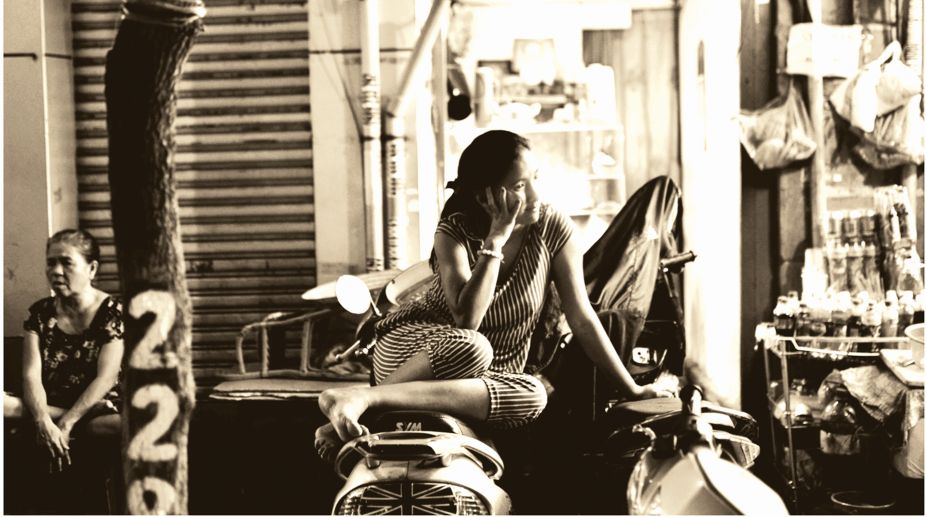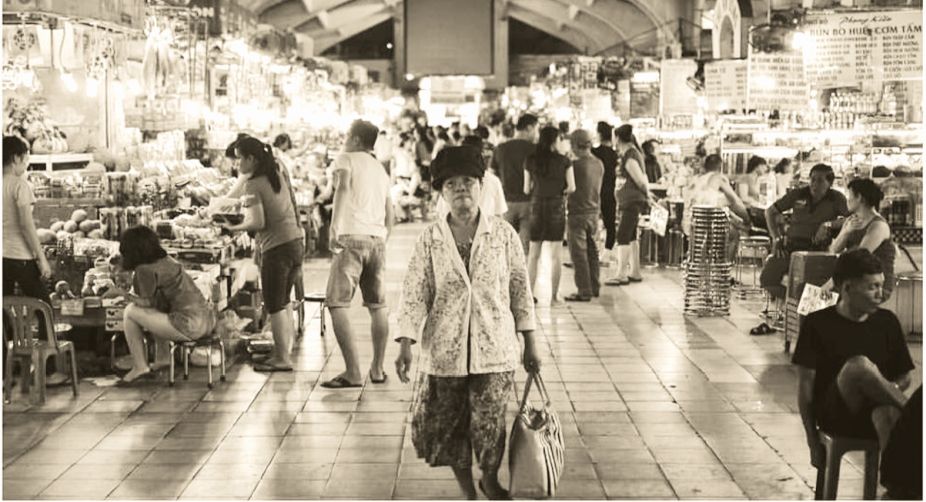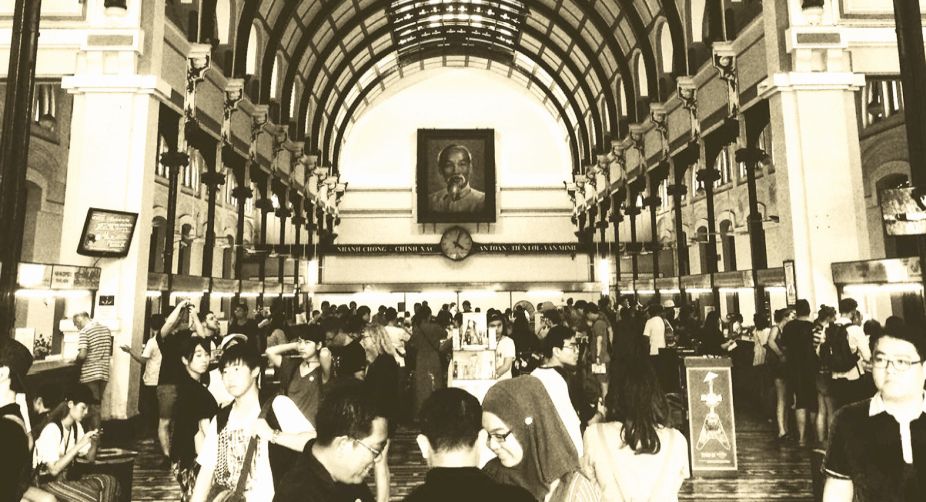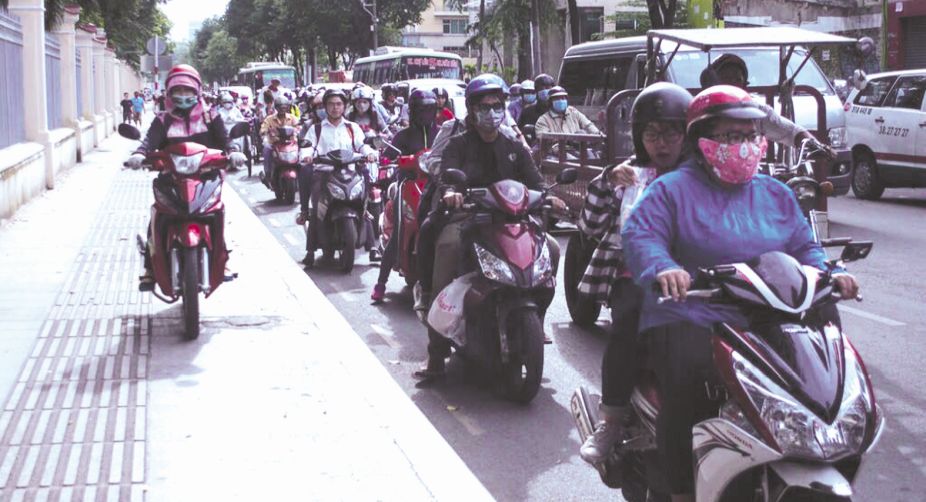One killed, three injured in explosion in paper factory in Vietnam
One paper factory worker died and two others were injured in a huge explosion in Vietnam's Bac Ninh province on Tuesday morning, Vietnam News Agency reported.
The city will make you fall in love with itself, its people and culture so fast that you won’t want to leave.

Ben Thanh Street.
Thinking about Vietnam, one may imagine a lot, but the first thing that comes to mind is the war. In addition, you might think about the food, culture and motorcycles outnumbering cars on the roads!
When you get out of the Tan Son Nhat International Airport in Ho Chi Minh City, you will be greeted by a cacophony of vehicles honking and cab drivers lining up, trying to convince you to ride in their cab, and sometimes quoting ridiculously high fares. The best way to the city from the airport is an Uber or Grab (they are much cheaper than metered taxis and more easily available).
Despite the war having ended more than 40 years ago, it seems as if the city and its people need 40 more years to finally get rid of its shadow. As you go into the city, the familiar red of the ruling Communist Party adorns the streets.
Advertisement
So, like myself, if you are in Saigon for 36 hours, here’s the first thing to do — rent motorcycles; see the city; walk around in District 1 where all the main attractions are; go to intimate pubs that play rock music; go to Backpacker Street and gorge on the delicious street food; eat Pho at street stalls, spend time with the street vendors at Bên Thành Market; and of course, don’t miss out on the iconic Vietnamese coffee.

Accommodation in District 1 is quite expensive and living outside of the main city area can actually be very nice. We were in a high rise apartment in District 7, with a magnificent view of the city, but we had only 36 hours! We decided to leave first thing in the morning and found ourselves in the centre of District 1. From there, with the help of a map we navigated our way first to the War Remnants Museum.
Entering the museum itself gives you the chills. There is a deep sense of respect in everyone’s hearts as they enter — respect for the struggles that the nation went through and respect for the people who pulled through it.
Starting from the day the war began to the atrocities committed by the American forces in the later years under Lyndon B Johnson’s command; there are relics and photographs that document every ugly aspect. Communication exchanges between Ho Chi Minh and other influential communist leaders around the world are also made public.
However, the most disturbing gallery is the one that documents the effects of Napalm on common citizens during the war. It is not uncommon to see people break down in this gallery. There is also a small souvenir shop on the ground floor, where one can buy replicas of war-time lighters, literature on the war from Vietnamese authors’ perspective and a lot of other 70s memorabilia.
Our next stop was lunch. We found a small food stall run by a couple just a few blocks away from the museum. We made a judgement call and decided to eat Pho here (that is all they were serving anyway) and it was the best decision we made. The local flavours were abundant in the big hot bowl of noodle soup that was served. Seasoned with bamboo shoots, salt, pepper and chilli flakes, it was the best meal we had in Saigon.

We then walked to the Independence Palace (Reunification Palace), the home and work place of the President of South Vietnam during the war. This is the place the Vietnam War ended when Ho Chi Minh stormed the gates with his forces.
It is a majestic structure, designed by Ngô Vi?t Th?, exclusively for the President. The entire palace is open to the public for viewing. Visitors cannot, however, enter certain rooms, but can appreciate the luxury in which the President lived from outside.
We got out of the Palace and walked to the Saigon Central Post Office, which is right next to the Saigon Notre-Dame Basilica. Unfortunately, the church was not open to the public at the time, so we had no choice but to admire its beauty from the outside and move on to the Post Office.
The Central Post Office’s grandeur was such that it would transport you to a different time. The high ceilings have intricate designs and the warm rays of the setting sun shine through the tall windows as a crowd of both locals and tourists go about their business. There are old-school phone booths in there to make international and inter-state calls and also stamp counters and postcard counters.
By the time we got out of the Post Office, the sun had already set and we decided to make our way to Bên Thành Market, located at the centre of District 1 and one of the oldest markets in Saigon. It’s an indoor market that occupies one entire city block and on both sides of the market, the streets are closed in the evening for vendors to set up the street market.

The market is famous for its narrow lanes lined with shops on both sides. You can also buy bottles of snake wine at this market but don’t try to take a picture of the bottle! The wine is made by infusing whole snakes (preferably venomous) in rice wine or grain alcohol.
It is said that the snake is infused whole in the bottle of alcohol, so that the “essence” of the snake or the venom gets mixed with the liquor. However, there’s no need to worry. The ethanol in the bottle renders the snake venom harmless, making the wine completely safe for consumption.
After having taken in the sights of the market, and chatting with some street vendors there, we made our way to Backpacker Street. The street is lined with hipster pubs and bars and souvenir shops. There are street food stalls; their vendors screaming for the attention of tourists.
It is bustling with people and the neon signs just make the place look like something out of a movie. We went up and down the street almost three times and finally decided on Radio Pub to soak in the nightlife of the city.
Speaking of nightlife in Saigon, there are more than enough options to find a party. Nightclubs like Lush, Apocalypse Now and Sin Lounge are abundant in District 1; most of them perched on one of the top floors of the high-rise towers in Downtown Saigon. These clubs are a bit steep for the pocket but totally worth it to experience the nightlife of the city.

Next morning, we woke up and decided to go for some much-needed coffee and breakfast to District 1 again. Tú Xuong in District 1 has rows of hip cafes serving authentic Vietnamese coffee. The coffee is darker in colour and stronger in taste, but at the same time, it is also incredibly refreshing. It is something one should not miss in Vietnam, come what may.
While this is all the time we had in Saigon, a trip to Vietnam can also take you to towns in the suburbs and the north of Vietnam, where more of the culture can be soaked in. However, even though we had so little time, the city won us over with its charm.
Pictures courtesy Abhinay Lakshman, Debayan Dutta and Natalie Chew
Advertisement